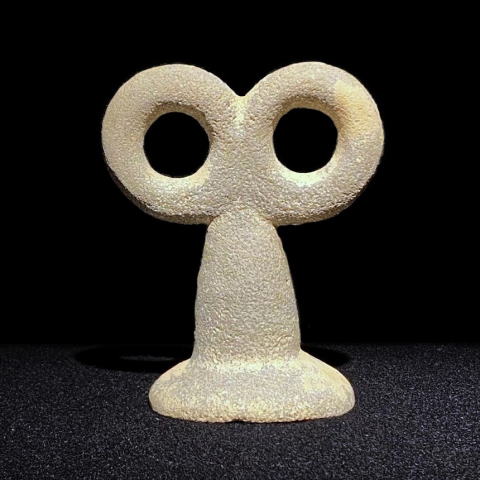 |
Taiyo Ltd.
2-11-9, KYOBASHI, CHUO-KU, TOKYO 104-0031 JAPAN.
TEL: 03-5524-6066 |
|
 |
|
Eye Idol
Mesopotamia, 2nd millennium BC., Limestone
H-16.5 cm B.C.
The eye idols were found in the north of Syria. A famous discovery was the "Temple of the Eye", which was found in 1937-1938 during British excavations led by Max Mallowan in the archaeological site called Tell Brack.
The idea that the power of the eye can be an amulet or on the opposite - cause misfortune, is common to many ancient civilizations. There is a variety of eyes in the ancient art such as the all-seeing eye of God, the evil eye, and the eye as an amulet protecting against evil. The Mesopotamian eye idol is thought to have been an amulet used for votive offering.
The eye idols vary in shape and size. Some are small, while others are large, such as this one The material they are made of is mostly alabaster and limestone, but there are also objects made of charcoal gray basalt remining Tell Halaf or red breccia.
|
There are various shapes, and this large, round glasses-like shape with a stick-like base is somewhat unusual for its abstract expression of high artistic level. The idols with eyes that feel more realistic are often smaller with almond-shaped eyes on an isosceles triangle body. Combinations of two or more equal size figures or different sizes are also known. Each one is amazing expression of an artistic vision which stylization surpasses contemporary art.
|
|
|
| ←BACK |
|